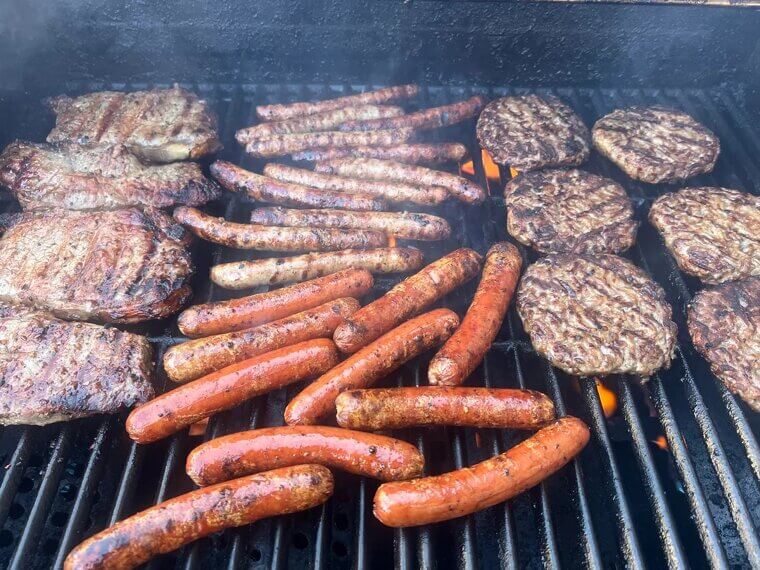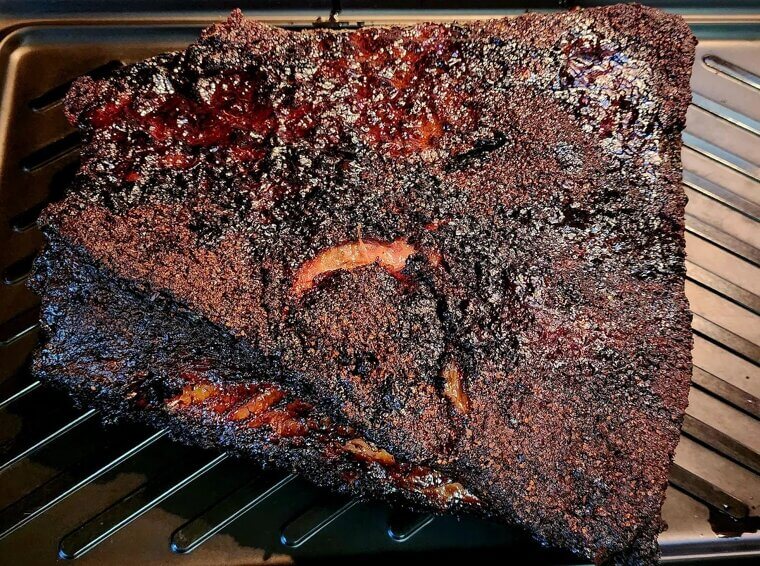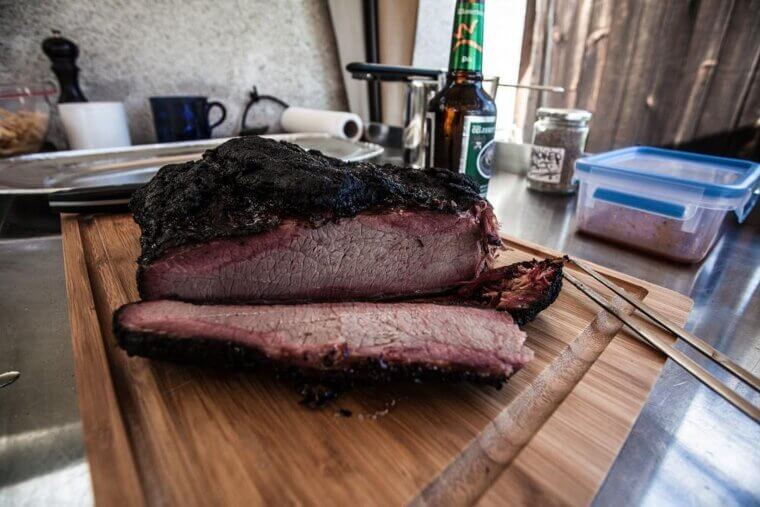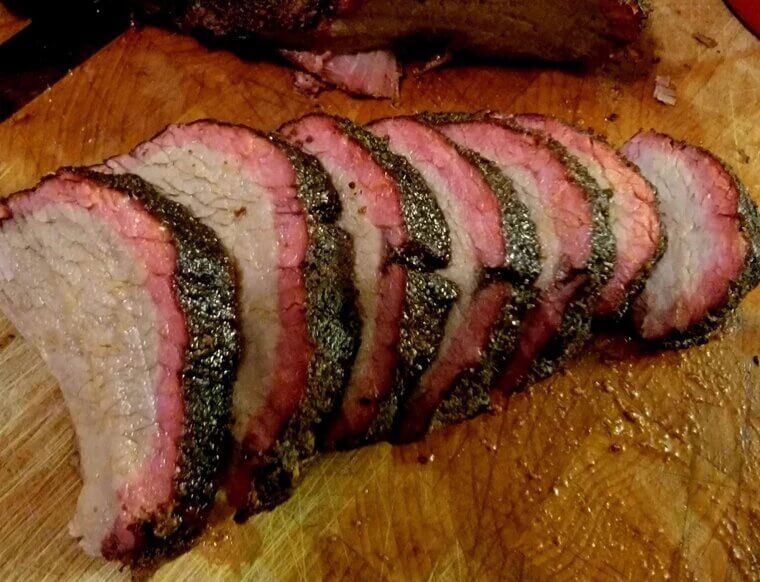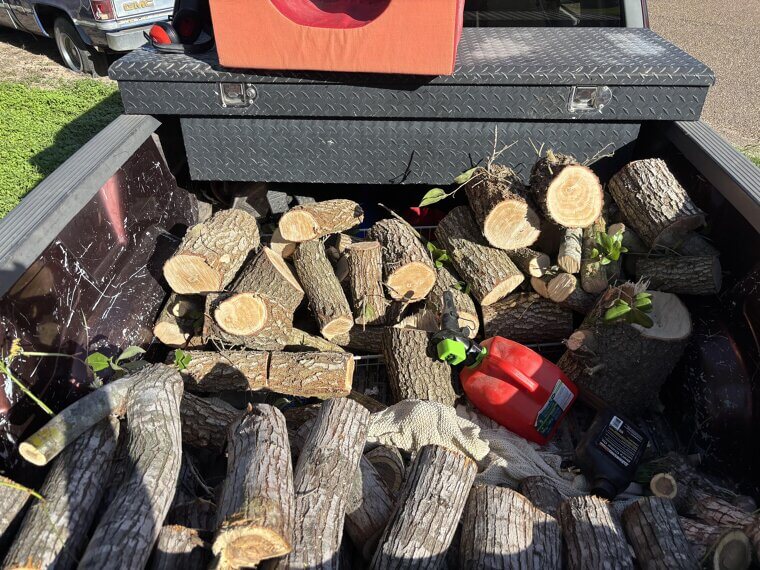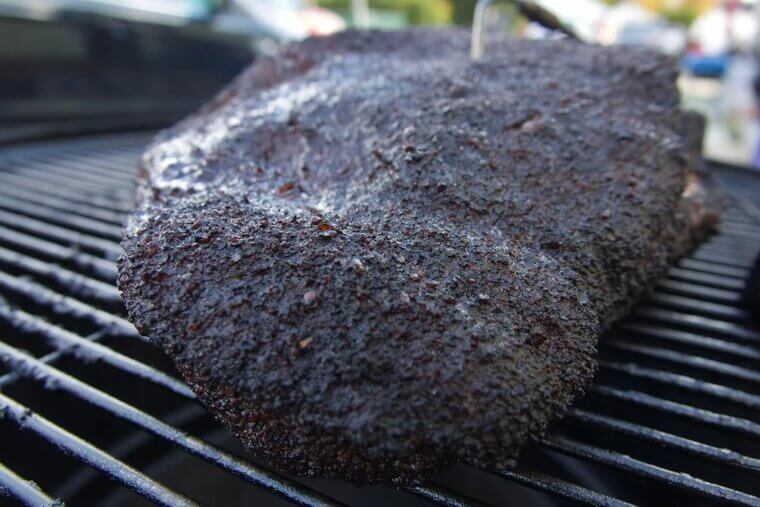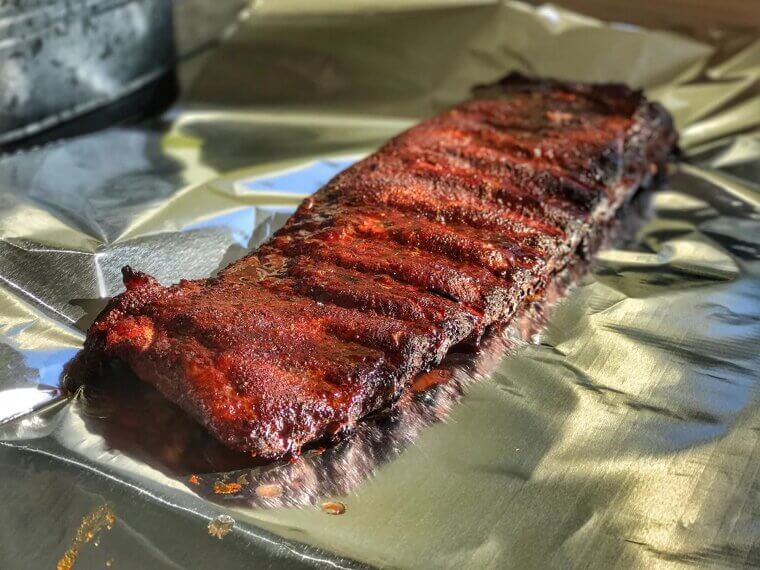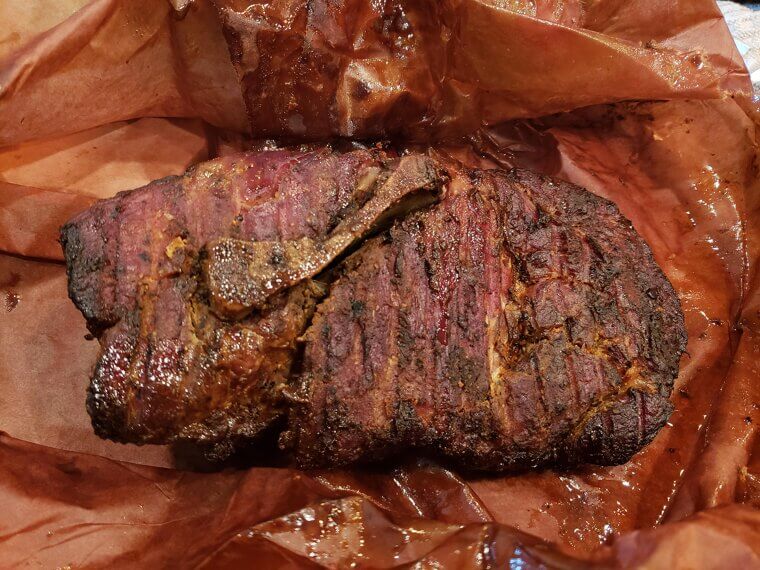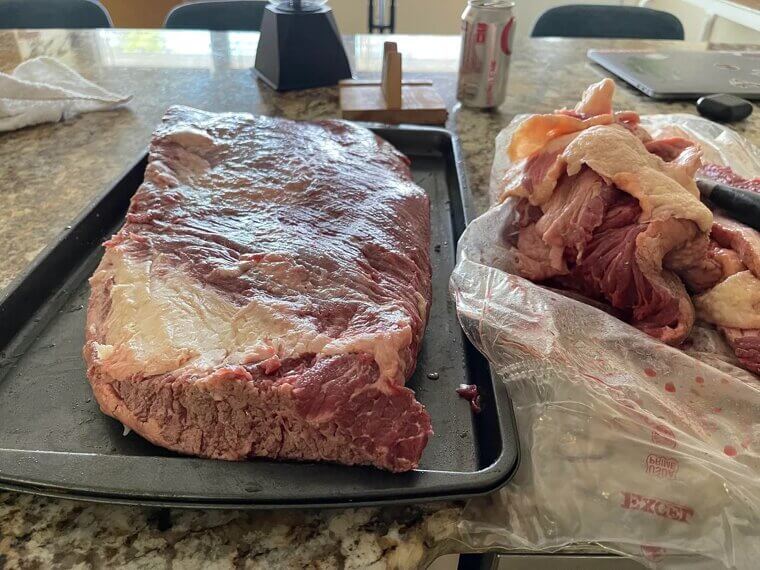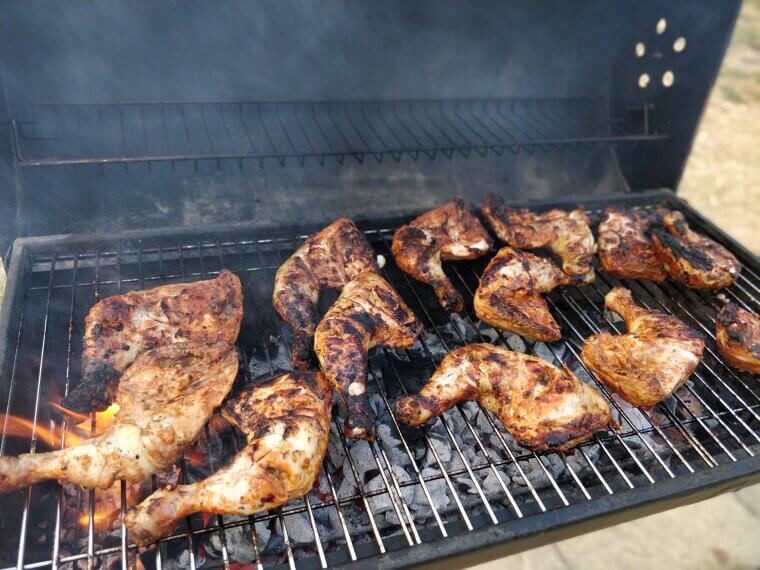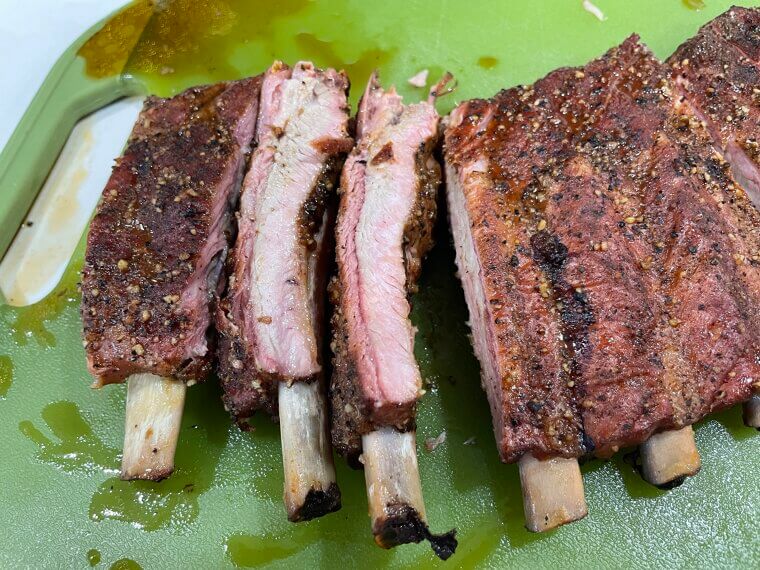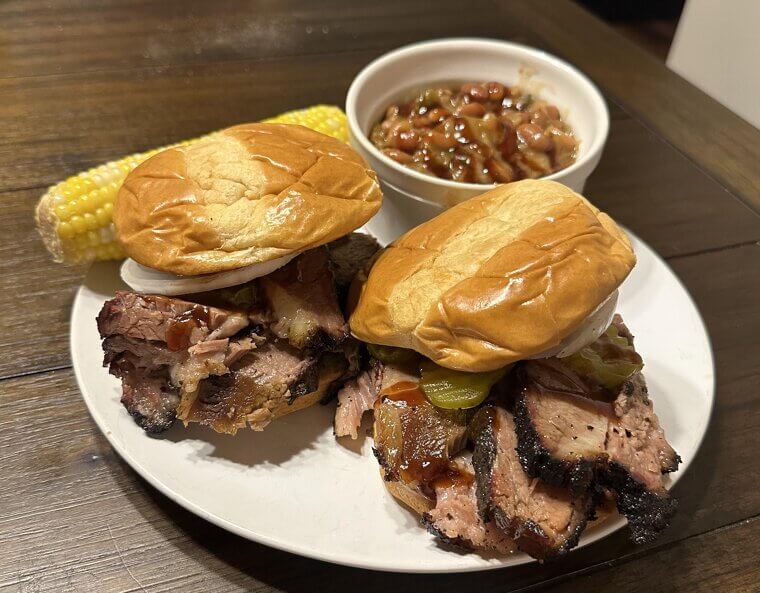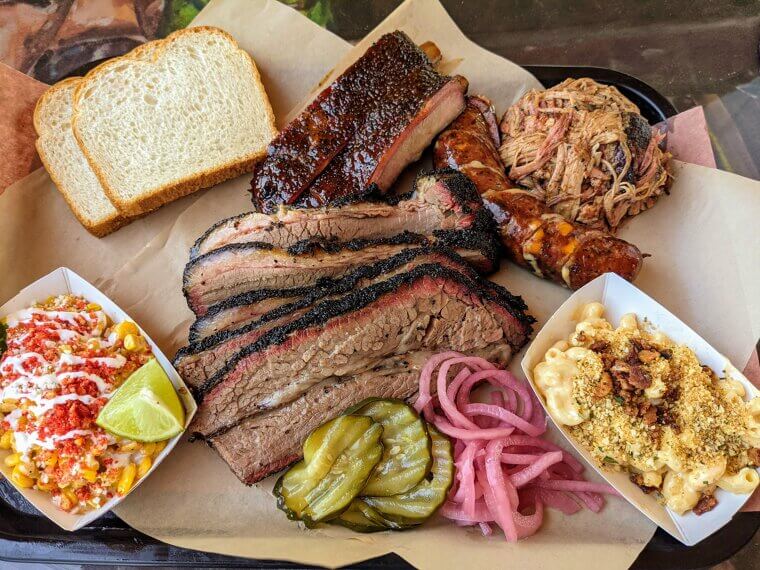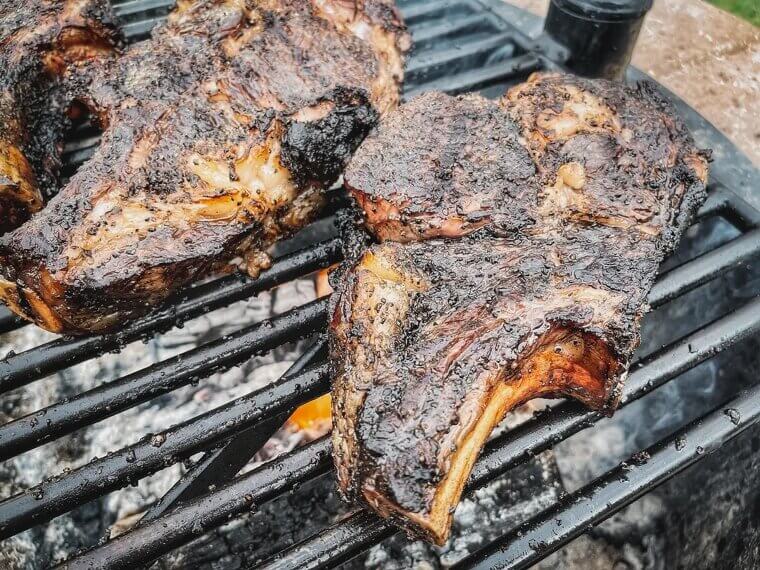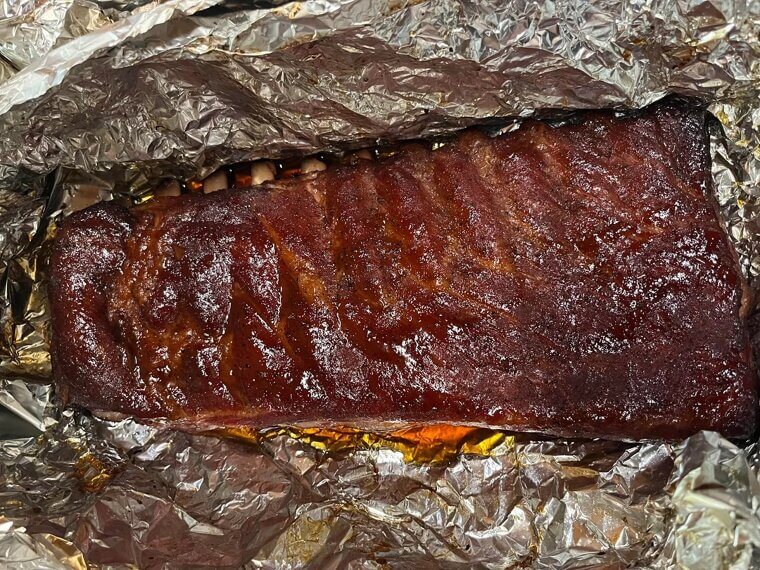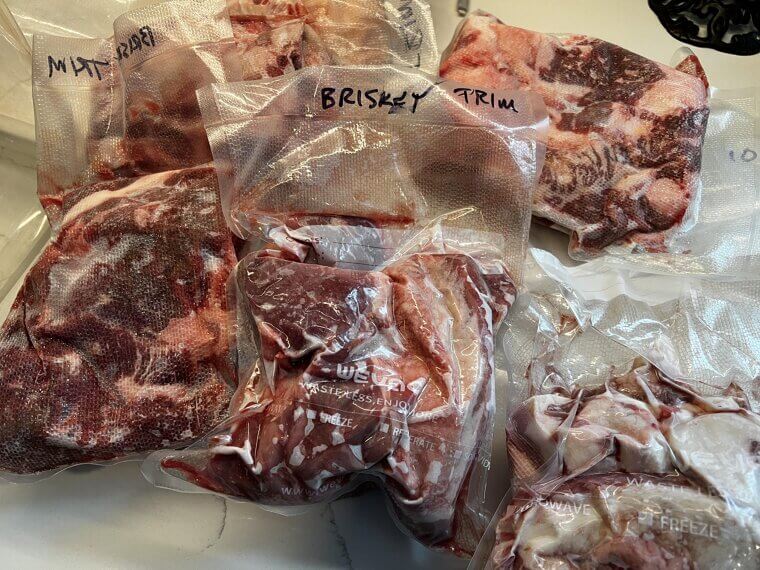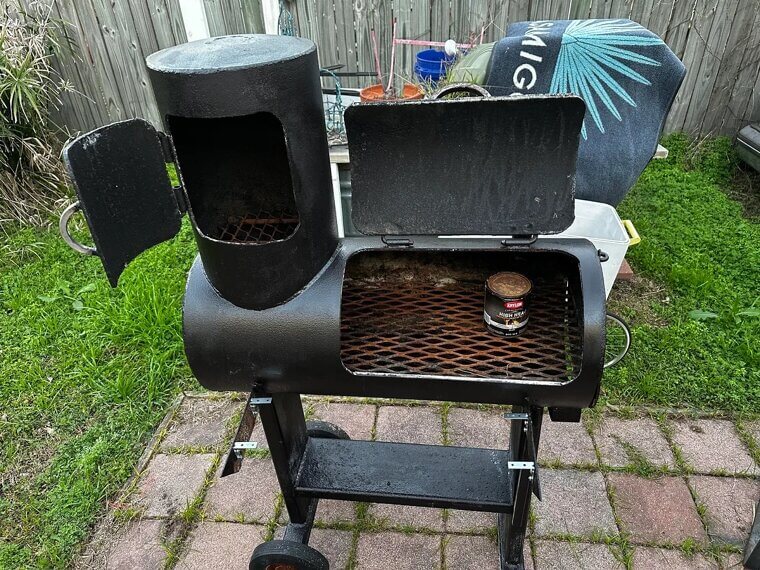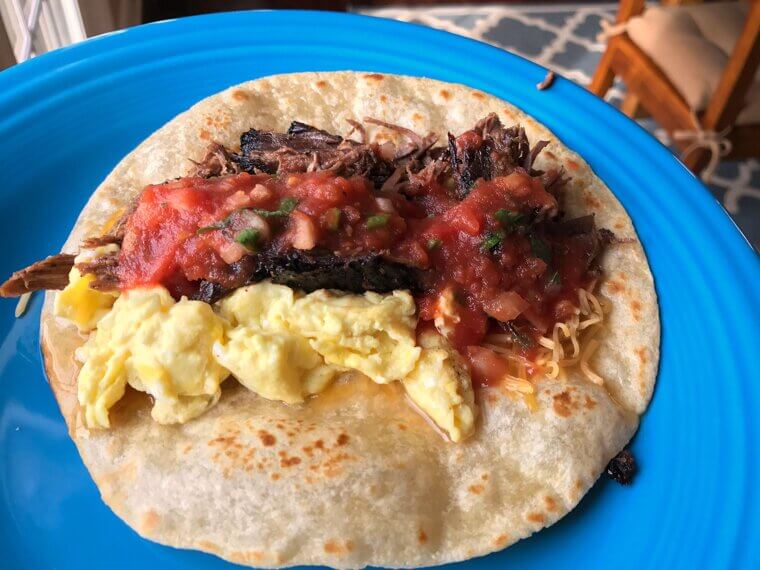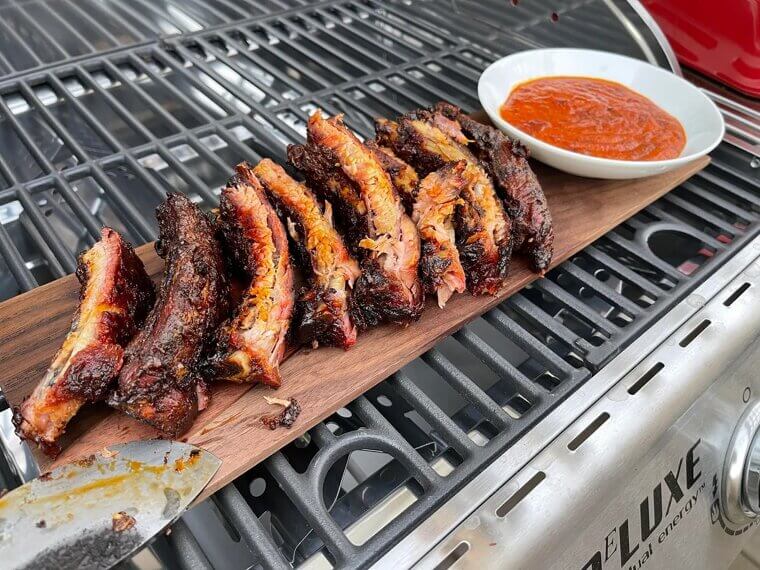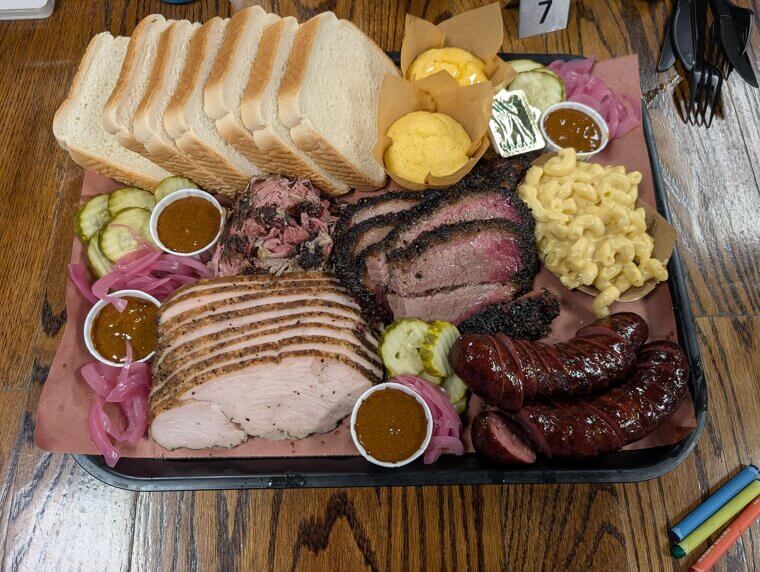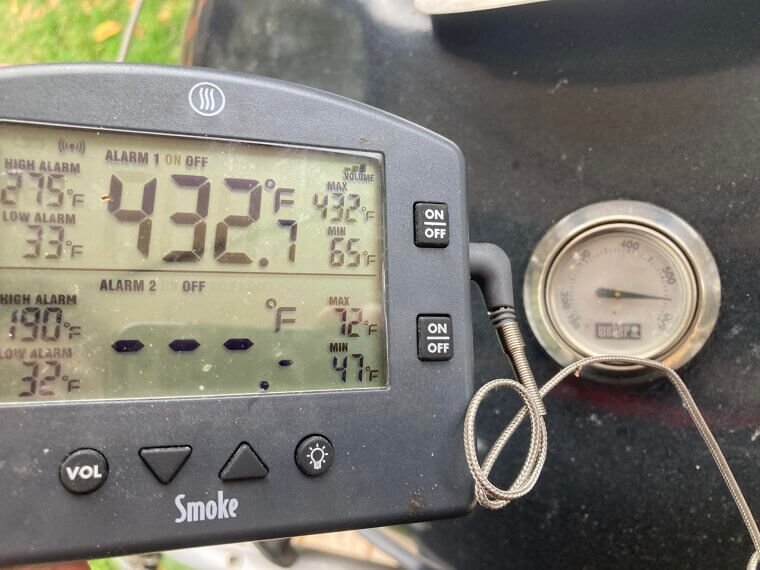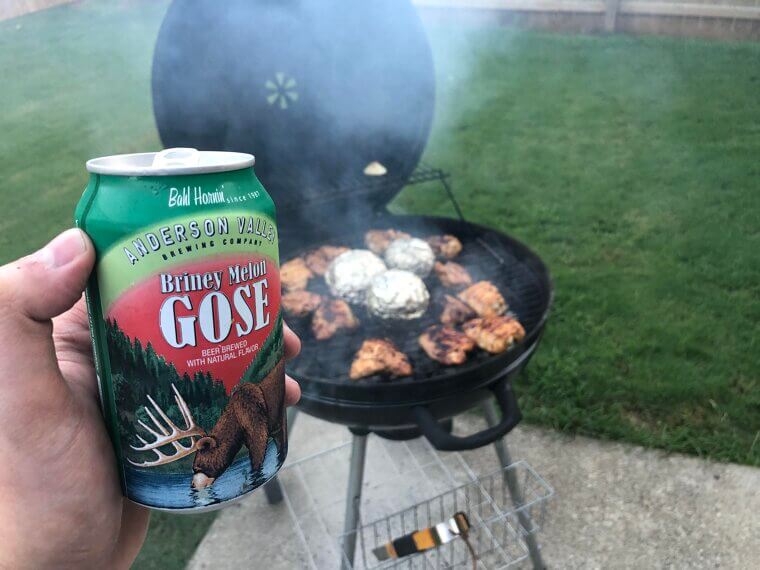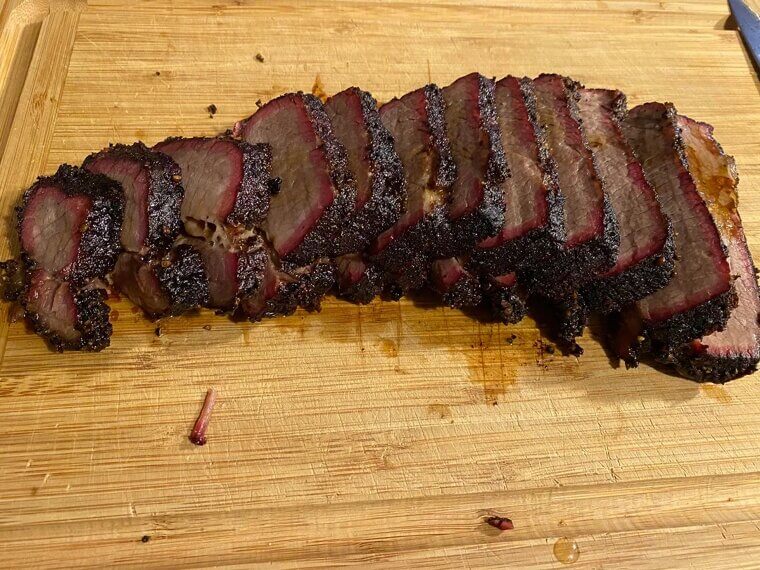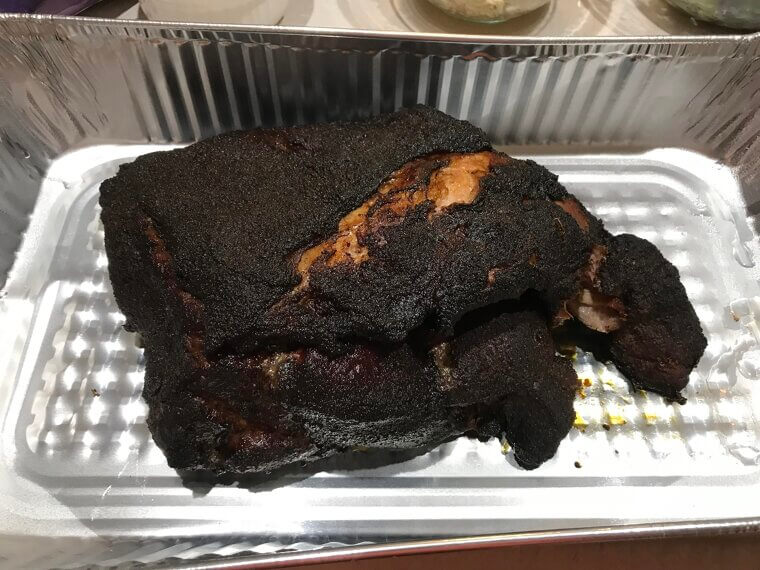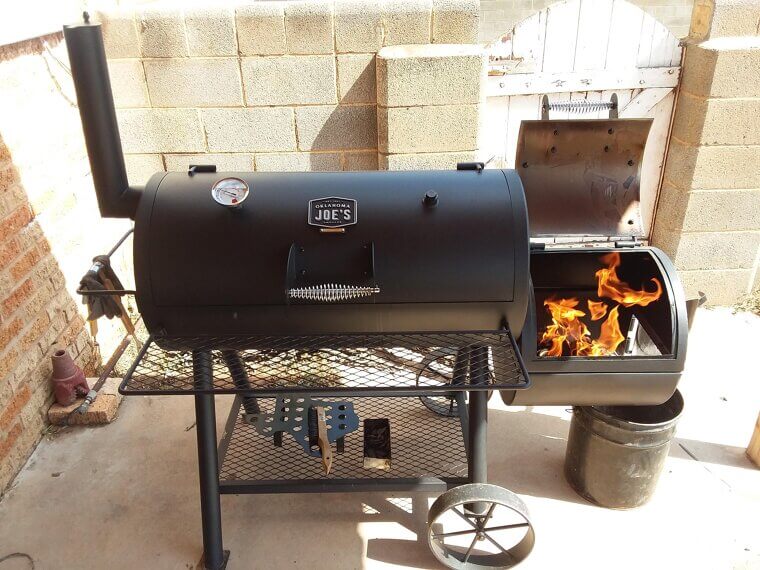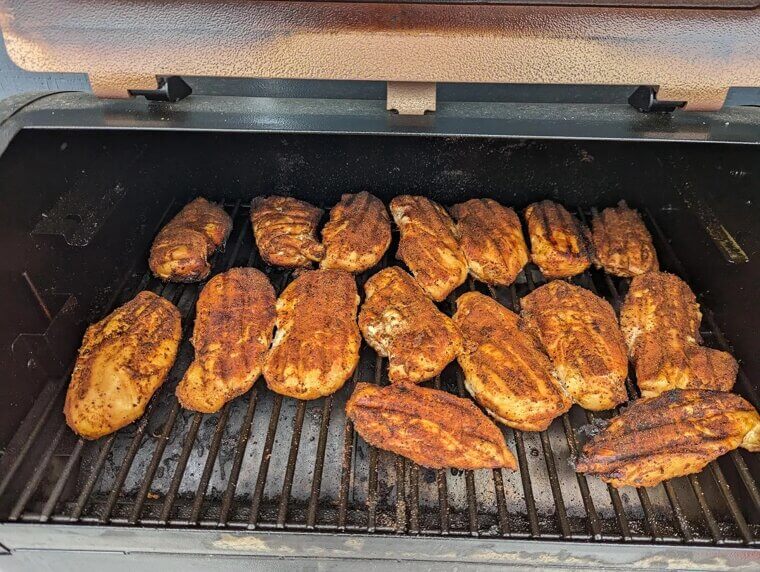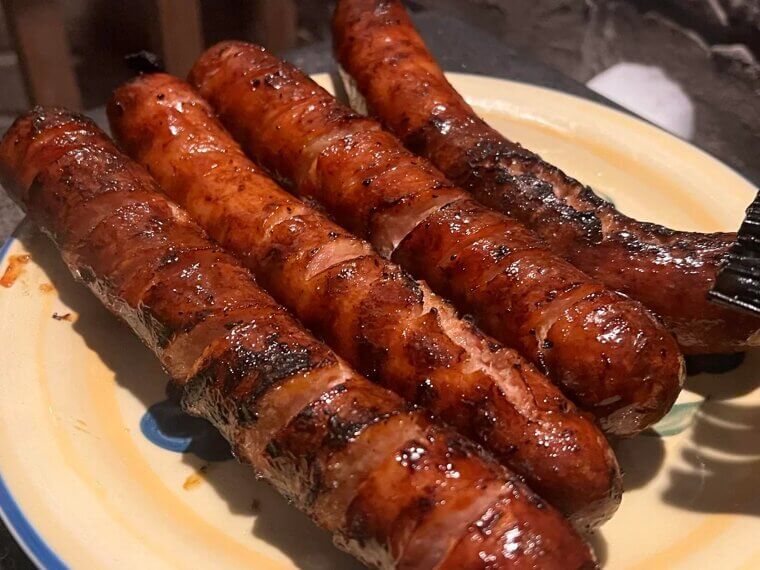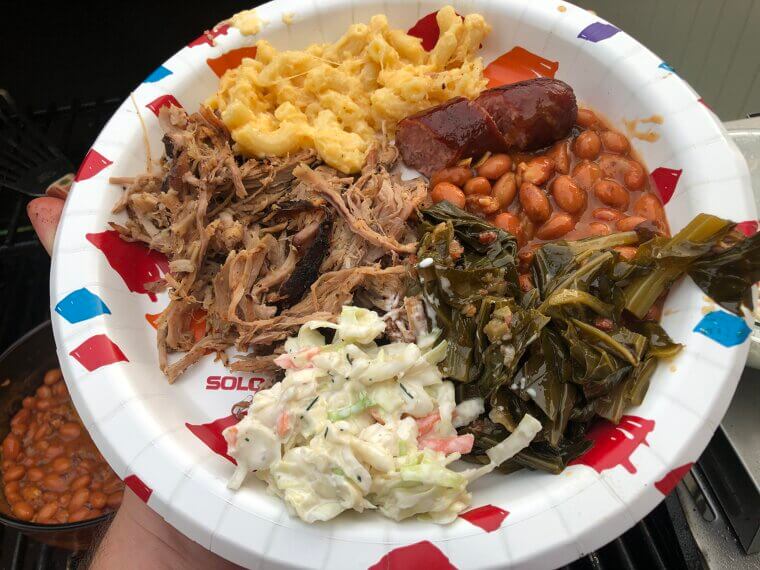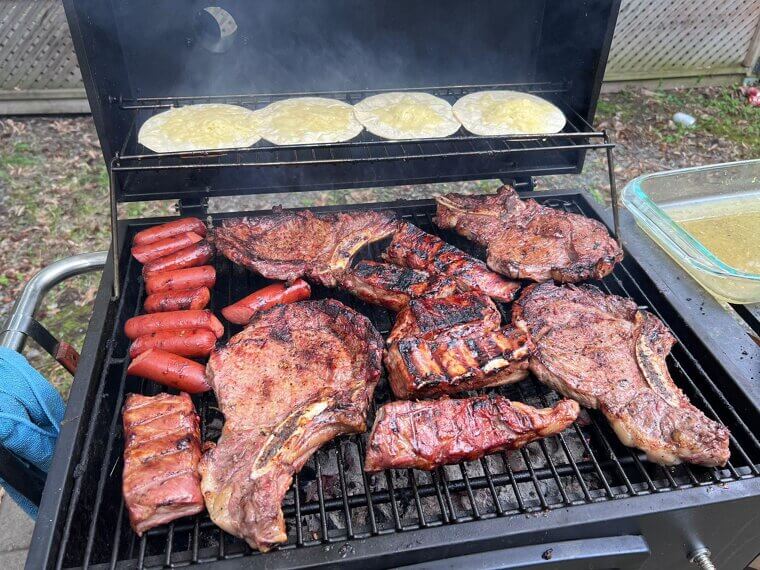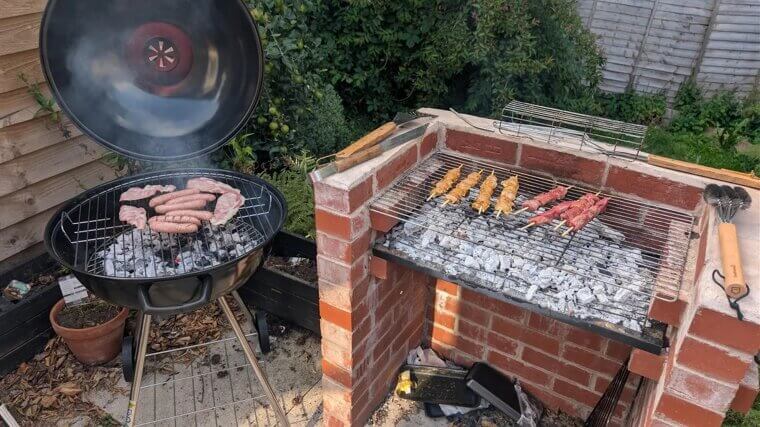Low and Slow Wins the Show
Every Texan pitmaster understands great barbecue takes time. Brisket needs hours (sometimes over 12) of low heat to reach smoky perfection. The magic happens around 225°F, where fat melts into the meat.
Mesquite Isn’t for Everyone
Texans love their wood, but mesquite is the wild child of the bunch. Its assertive, earthy smoke will make meat taste extraordinarily good or like it spent the last week in a campfire. Locals counter mesquite with oak or pecan to get that signature flavor without the “chewing on smoke” effect.
Salt and Pepper Are All You Need
Simplicity wins in Texas. A true pitmaster will rely on just salt and black pepper, and if he's feeling adventurous, he’ll use a sprinkle of garlic powder. A minimalist rub allows the smoke and beef to be the star of the show. If your brisket needs 12 spices, you might be hiding something (and Texans will notice).
Sauce Is Optional
Ask a Texan, and they’ll tell you that good barbecue doesn’t need sauce. The meat should shine on its own, smoky and tender. Sauce is a sidekick, not the star. Most places still want to keep a tangy tomato-based mix nearby for tourists or those "still learning."
The Brisket Test
Texans judge barbecue by brisket alone. If they see pulled pork, they know it’s for out-of-towners. A perfect brisket jiggles when you slice it, with a black bark and pink smoke ring that proves it’s been tended with love. If your brisket cuts like butter, you've earned your stripes in Texas BBQ.
Oak Is the Real MVP
When Texans refer to the best smoke, it's typically oak. It’s the steady, even-burning wood that gives meat that deep, mellow flavor without overpowering it. Post oak is the go-to in Central Texas.
The Bark Means Bragging Rights
That dark, crusty bark on a brisket? That’s where all the flavor lives. It’s a combination of smoke, fat, and seasoning magic. Pitmasters guard their bark like gold. A good one has a little crunch to it, smells smoky-sweet, and tells everyone at the table, “Yeah, I nailed this cook.”
Never Rush the Rest
When your brisket is ready, don't slice it. Texans know the real trick is letting it rest. Wrap it, let it sit for at least an hour for the juices to redistribute. If you skip this step, you’ll ruin something great and turn your brisket into cardboard.
Paper Beats Foil
Here’s a Texas pit secret: Butcher paper is better than foil. Foil traps too much steam and makes your bark soggy. Butcher paper breathes just enough to keep things juicy without ruining that crunch. The pros call it the “Texas crutch,” and once you try it, you’ll never go back.
Trim, Don’t Butcher
Texans don’t hack away at their brisket. A good trim means taking off enough fat to let the smoke in but keeping enough to stay moist. It’s a fine line, and Texans walk it like pros.
Pitmasters Don’t Peek
Every Texan knows the golden rule: “If you’re lookin’, you ain’t cookin’.” Each time you open that smoker lid, you kill your heat and slow your cooking process. The best brisket takes patience, and the best pitmasters trust their smoke.
The Smoke Ring Is Pure Brag Material
That pink halo around a slice of brisket is proof of perfect smoke. Texans show it off like jewelry. It indicates that the meat cooked low and slow, and with the best wood. There are no shortcuts or fakes, just smoke mastery in every tender bite.
Leftovers Deserve Respect
In Texas, leftover barbecue is tomorrow's tacos, breakfast hash, or chopped beef sandwiches. Some people will tell you that brisket is even better the next day when the smoke has settled in. Nobody here wastes barbecue. It’s practically a crime punishable by side-eye at the cookout.
Pickles and Onions Aren’t Just Garnish
Pickles and onions accompany every good Texas plate, and not just for looks. The crispy, tangy crunch is a palate reset that cuts through all that rich, smoky meat. It’s the secret balance to every delicious bite.
Texas Barbecue Has Regions
Not all Texas barbecue is created equal. Central Texas is known for brisket and post oak. East Texas serves up saucy, tender ribs. West Texas relies on mesquite and open flames. South Texas loves barbacoa. Each region has its own style, and every Texan has their opinion about which is best.
Wood Choice Can Make or Break It
If you ask any Texan about wood, you will likely get a full lecture. Post oak is traditionally the gold standard, but a lot of folks prefer mesquite for its intense, punchy flavor. The wood you pick becomes your signature. If it is too smoky, you'll taste campfire instead of brisket. It’s all about balance.
Fat Side Up or Down? Depends Who You Ask
In Texas, disagreements over brisket can end friendships. Some folks insist on fat side up to allow the brisket to "baste," while others prefer fat side down to keep the heat off. The truth is, they both work. What matters is how your smoker is set up and how often you peek inside.
Wrap It or Let It Ride
At approximately 165°F, many Texans "Texas crutch" their brisket. This means they wrap it in foil or butcher paper for the purpose of trapping moisture and accelerating the cooking process. Others don't, stating that the bark will be ruined. Either way, it’s a battle of juiciness versus texture. Most pitmasters choose a side early in the game and never look back.
Brisket Trimmings Never Go to Waste
Texans make it a point not to waste good meat. The trimmings from a brisket are often made into chopped beef sandwiches, beans, or burnt ends. Some pitmasters will mix them into sausage just for extra flavor.
A Good Pit Has Personality
Smokers are essentially heirlooms. Many pitmasters name their pits, devote endless effort to tinkering, and firmly believe their pit “runs better” after a few years of seasoning. The rust, the smell, the quirks, it’s all part of the barbecue’s soul.
Breakfast Tacos Count as Barbecue
Ask any Texan: smoked brisket breakfast tacos are absolutely part of the barbecue tradition. Chopped brisket, scrambled eggs, cheese, and salsa wrapped in a warm tortilla is the breakfast of champions. Some folks claim it’s the only proper way to use leftover brisket.
Sauce Goes on the Side
In Texas, barbecue sauce is a condiment, not a cover-up. You’ll find it offered politely on the side, not drowning the meat. The idea is to taste the smoke, spice, and bark first. A good pitmaster says if you need sauce, you’re eating the wrong brisket.
White Bread Is the Great Equalizer
No artisan buns here, just plain white bread. Texans use it to soak up sauce, cradle a rib, or wipe the plate clean. Although it's not fancy, it’s tradition.
Don’t Trust the Thermometer Alone
Every Texan pitmaster knows the meat tells you when it’s done. A thermometer might say 200°F, but the real test is the “jiggle.” If the brisket wiggles like Jell-O when you pick it up, it’s ready. Trust your instincts and your tongs over numbers every time.
Beer Makes a Great Marinade
A can of Lone Star beer, a shot of Worcestershire sauce and a pinch of spice will tenderize and season meat really well. The beer's enzymes break down protein while adding a bit of malt sweetness.
Always Slice Against the Grain
One bad slice can ruin a masterpiece. Texans know to cut brisket along the grain and not with it, which keeps the meat tender and easy to chew rather than stringy. A good pitmaster can identify grain direction in an instant and never messes it up twice.
The “Texas Crutch” Has Its Critics
Some purists argue that wrapping meat in foil while smoking is cheating, while others say it keeps brisket juicy.The debate is more heated than a mesquite fire. But one thing is for sure: both sides are incredibly passionate, and a Texan will defend their method like they are defending their family honor.
Keep the Lid Closed
It’s a rookie move to open the smoker too often. Each time you open the lid, you let out heat and smoke, and this increases your cook time and dries the meat. Seasoned Texans like to joke that the first rule of smoking is not to babysit the brisket.
Barbecue Is a Community Affair
Barbecue is not simply a meal in Texas; it is an event. Families gather around smokers, neighbors wander by to get a taste, and the stories flow like sweet tea. The pit brings people together and shows that the true secret to great barbecue is always community.
Don’t Forget the Sausage
Brisket gets all of the praise, but smoked sausage is a Texas barbecue staple. Most places make their own smoked sausage, blending beef and pork with secret spice mixtures. The best ones snap when you bite into them and leak juice like a well-oiled legend.
Side Dishes Deserve Respect
Texans are very serious about their sides. The holy trinity is creamy mac and cheese, tangy coleslaw, and slow-cooked beans. Some pitmasters say the quality of a barbecue joint shows in its sides.
Barbecue Cook-Offs Are Serious Business
Texas hosts scores of barbecue competitions, from small town fairs to the iconic Houston Livestock Show & Rodeo cook-off. Becoming a winner at an event can make a pitmaster a local legend. Teams camp out for days, fine-tuning brisket, ribs, and beans while trash-talking their rivals over cold beer.
Cowboy Style Still Lives On
Long before high-tech smokers came along, cowboys slow-cooked meat over open coals and covered it with dirt to trap heat. Some old-school Texans still do it that way during ranch cookouts. It’s messy, time-consuming, and downright magical when it's done right.
The Pitmaster’s Nap Is Sacred
Smoking meat can take 12 hours or more, and every Texan has struggled through an overnight cook. This is why we have the “pitmaster nap.” You sneak in a few minutes of sleep in a folding chair, smelling like oak and success, while the pit hums beside you.
Barbecue Is a Love Language
In Texas, barbecue represents something special. It represents pride, patience, and connections. Each bite contains the history of families, competitions between friends, and the smells and tastes of the past. When you share a plate of brisket with someone, it means they're a part of your circle. For Texans, that is as close to "I love you" as you can get.

